This is the final installment of a series of posts intern Jeannine has written about her work on the late Toyoaki Uehara papers. See also Part 1 and Part 2.
There are so many interesting items tucked in among the Toyoaki Uehara correspondence files that it is almost a shame to only post images of a few. Having gained “pen pals” from around the world, Uehara consequently received numerous cards from people who just wanted to keep in touch. Amongst the usual Christmas greetings, standard birthday wishes, and humorous cartoon postcards are a few gems, hand-printed objects both colorful and beautiful, representing art and craft from various countries. Some are simple, such as the postcard embossed with a Japanese scene and highlighted in watercolor.
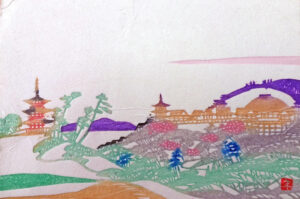
Others are more complex and detailed, like the small but lovely greeting card showing an image of a waterfall (left). Created using Japanese woodblock printing techniques, these images are refined over a series of stages as different colors are added. Time-consuming to make, quality woodblock prints are true works of art. There are several examples of this kind of work within the collection.
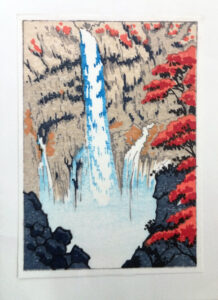
Another intriguing item is the pipal leaf skeleton painting from India. The pipal (also spelled peepal, peepul or pippal) tree holds special significance in Indian mythology, and is sometimes known as the Bodhi tree. Its leaves are frequently skeletonized and painted, and the images framed or attached to greeting cards and bookmarks. Typically paintings include particular themes, such as figures from Hindu mythology, animals, and scenery. These leaf skeletons are exceptionally delicate, and this particular example has held up very well considering how it was stored, fully intact and retaining its original vibrant colors.
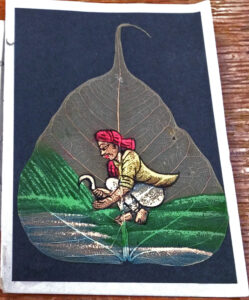

I also discovered a beautifully detailed and gorgeously colored wood postcard depicting a scene on a Japanese river. The vibrant red stamps on the reverse side are equally crisp and attractive. Postcards made out of wood became popular during the 1950s and 60s, and vintage American cards are easily come by. Size, style, thickness and quality vary widely, as do the themes of the designs. This lovely example has been carefully rendered onto a shaving of wood barely thicker than a piece of paper, fragile to the point of brittleness, that somehow made it safely to the United States via airmail in 1969!
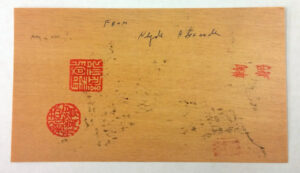
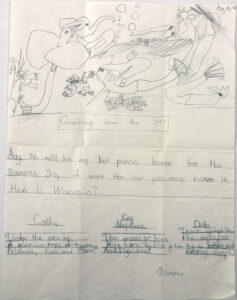
Some items are more humorous and have a great amount of personal charm. For me, the nicest ones are the letters and cards from Dr. Uehara’s son, Osamu. One charming piece is a brief letter that includes a drawing and some dialogue from a little story titled “Grettings (Greetings) from the Sea.” This is probably the most elaborate example we have from Osamu, and it seems like perhaps he was trying to impress with his excellent storytelling abilities.
In the image below, one of several examples of ink drawings from the same correspondent, two crying bunnies on the hill seem sad to see the O’Brien family go, and drawn in on the trailer among the books and “sweet memories” are “hickory nuts” and “black walnuts.” Though we will likely never know the specific significance of these little details, it’s nice to think that this sweet drawing made Dr. Uehara and his family smile when it was received.
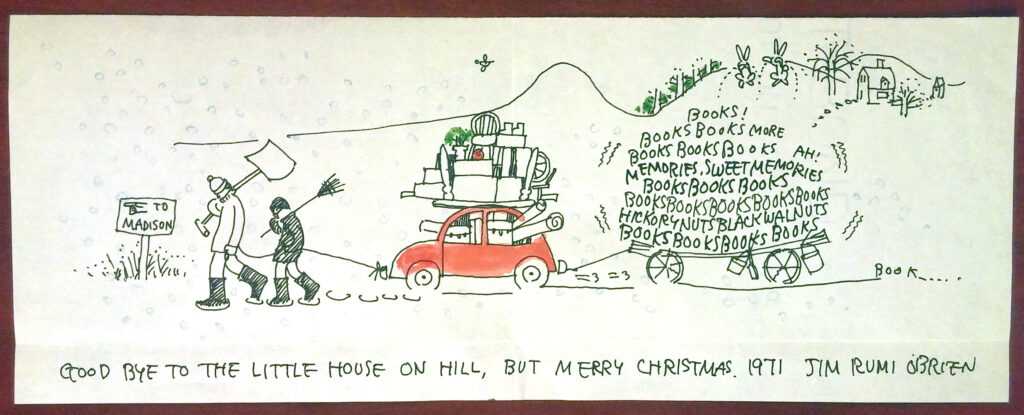
Well, this marks the final chapter of my Uehara experience. Thirty-eight years and sixty-six total folders of correspondence are now behind me. I hope our blog readers have enjoyed following along on my journey with this rich and varied collection! While my internship is up, I will be continuing to work in the archives as I complete my coursework so I look forward to more adventures with you!
Description and arrangement of the Uehara papers will get wrapped up in the next few months and the finding aid added to ArchivesOnline. In the meantime, if you have any questions about this or any other Archives collection, please contact the Archives staff!
Leave a Reply